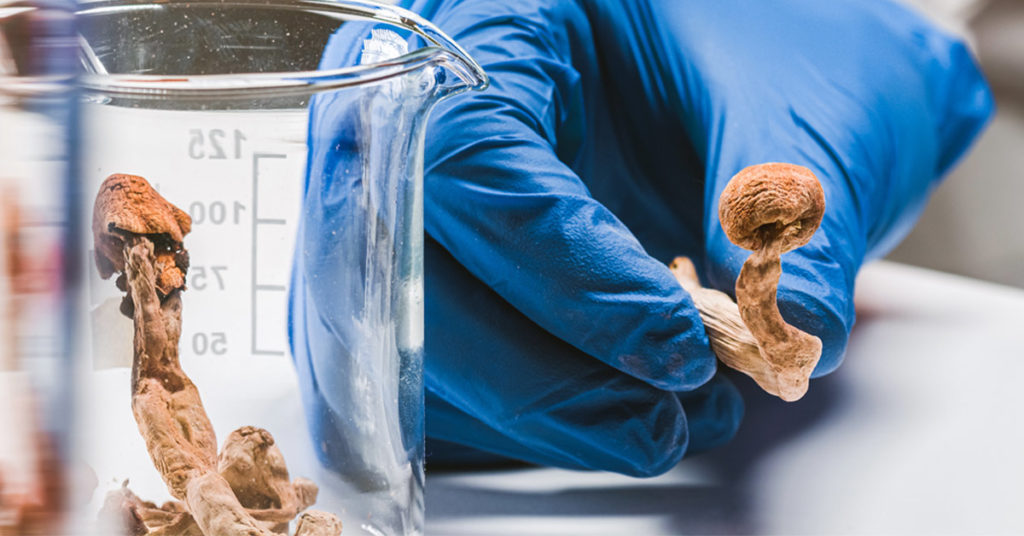Depression is not simply a mood disorder, a feeling of sadness, or being ill at ease. Depression can completely shut a person down, manifesting as an inability to make decisions, to take action, to think. Even sleep is affected by depression.
Researchers and clinicians who treat depression are learning that the physical manifestations can be mirrored by internal, cellular changes. Some people with depression have decreases in their gray matter volume, particularly in areas like the hippocampus (important to memory, learning, and emotions) and prefrontal cortex (where higher-level thought and planning abilities are based).
Additionally, imaging has shown a decrease in the number of synapses—the structures through which electrical or chemical signals are passed between neurons and other cells—in persons with chronic depression. Without the signals that synapses transmit, brain function is disrupted.
And without intervention in depression, synapse decrease can continue.
While there are drugs and behavioral therapies to treat depression, these therapies can be slow to act and sometimes ineffective. In addition, once synaptic loss has occurred, these therapies are less effective.
In their August 2021 paper, “Psilocybin induces rapid and persistent growth of dendritic spines in frontal cortex in vivo” (1), Shao et al. state,
“It has long been recognized that these compounds (serotonergic psychedelics like psilocybin) may have therapeutic potential for neuropsychiatric disorders, including depression, obsessive-compulsive disorder and addiction”.
Previous research has shown that serotonergic psychedelics like psilocybin (from certain mushrooms) can treat depression rapidly, with benefits lasting for months (2). These and other results led the United States Food and Drug Administration (FDA) to announce a “Breakthrough Therapy” status for psilocybin in 2019, opening the way to clinical trials for use of psilocybin in the treatment of depression in people.

In the past three decades, researchers have shown that psilocybin administration:
- elevated expression of genes involved in synaptic plasticity in rats (3)
- induced increased in spine size and dendrite branch spread when applied to neuronal cell cultures (4,5)
- was connected to higher binding of a presynaptic protein tracer in positron emission tomography (6)
In this paper, Shao et al. sought to demonstrate psilocybin-induced structural plasticity at cellular resolution in a mammalian brain, as well as the timing in which this brain rewiring might occur in vivo
- They used chronic two-photon microscopy to track dendritic spines in the cingulate/premotor region of the medial frontal cortex. Their findings showed that one psilocybin dose led to long-lasting increases in spine density and spine head width in the mouse medial frontal cortex.
- Realizing that increased spine density could be due to either higher formation rate or lower elimination rate, or both, Shao et al. analyzed the same dendrite segments across adjacent imaging sessions to determine the turnover rate of dendritic spines. Their findings showed an increase in the rate of spine formation. In addition, they showed that a fraction of these spines persisted for at least one month.
- They showed that the time course for structural remodeling of brain regions was rapid and persistent. This feature may be shared by other quick-acting serotonergic compounds, such as ketamine, despite a difference in compound targets.
- They treated mice with a compound that blocked the physical signs of psilocybin administration, without losing the induced structural plasticity. This result supports an ability to dissociate the hallucinogenic effects of psilocybin from the therapeutic benefits. Shao et al. note that it’s too early to extrapolate these results to humans, as the receptors involved are species specific, but this is interesting and promising work.
These authors make a fascinating contribution to what happens on a cellular level during and after psilocybin treatment. In addition, I appreciated their useful and interesting reference to previous research on serotonergic psychedelics. See the full article to learn more.
In psilocybin and other psychedelic drugs, there is hope for those suffering from depression, addiction, obsessive-compulsive disorder, and post-traumatic stress syndrome. Here is hoping that broader clinical access to these compounds arrives as quickly as the relief gained by those using them in clinical trial situations. We know from this work and that of others that the benefits can be long-lived.
References
- Shao, L.X. et al. (2021) Psilocybin induces rapid and persistent growth of dendritic spines in frontal cortex in vivo. Neuron 109, 1–10.
- Carhart-Harris, R.L. et al. (2016) Psilocybin with psychological support for treatment-resistant depression: an open-label feasibility study. Lancet Psychiatry 3, 619–27.
- Nichols, C.D. and Sanders-Bush, E. (2002) A single dose of lysergic acid diethylamide influences gene expression patterns within the mammalian brain. Neuropsychopharmacology 26, 634–42.
- Jones, K.A. et al. (2009) Rapid modulation of spine morphology by the 5-HT2A serotonin receptor through kalirin-7 signaling. Proc. Natl. Acad. Sci. USA 106, 19575–80.
- Ly, C. et al. (2018) Psychedelics promote structural and functional neural plasticity. Cell Rep. 23, 3170–82.
- Ly, C. et al. (2020) Transient stimulation with psychoplastogens is sufficient to initiate neuronal growth. ACS Pharmacol. Transl. Sci. 4, 452–60.
- Raval, N.R. et al. (2021) A single dose of psilocybin increases synaptic density and decreases 5-HT2A receptor density in the pig brain. Int. J. Mol. Sci. 22, 835.
